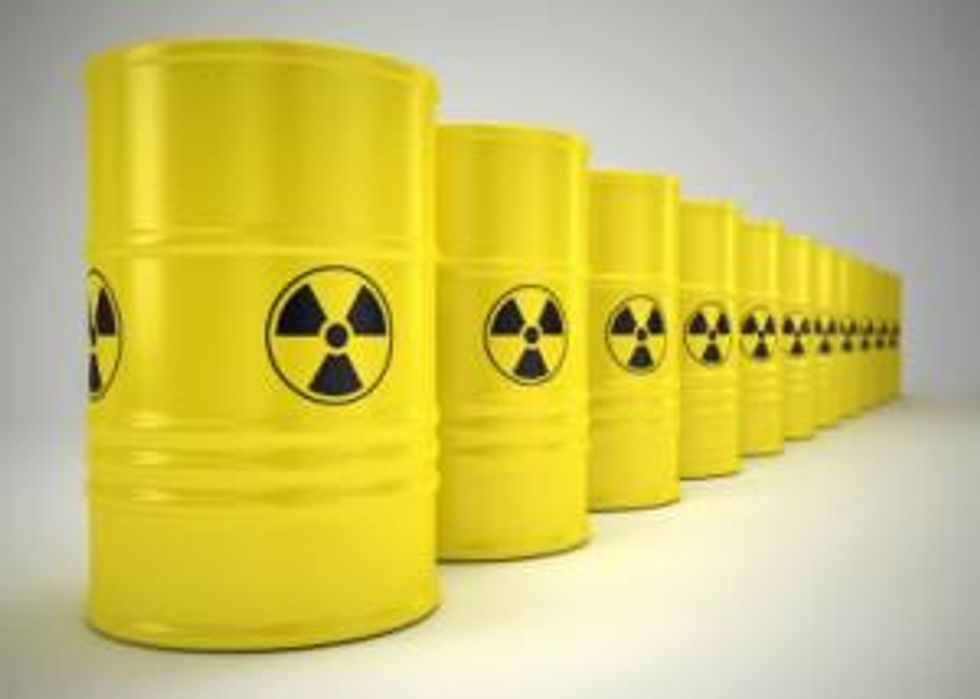Fission Uranium, which is awaiting the release of its NI 43-101 report, announced more summer assay results on Monday. Once again, the company’s news has caught the attention of at least one analyst.
Fission Uranium (TSX:FCU,OTCQX:FCUUF, FWB:2FU) continues to release impressive summer assay results, and with time ticking down until the release of the company’s NI 43-101 maiden resource report, analysts remain impressed by what it is reporting.
On Monday, Fission released results from 13 holes drilled on the R780E zone at its Patterson Lake South property, located in Saskatchewan’s Athabasca Basin. The big surprise? In one hole, the company reported 24.87 percent U3O8 at 7.5 meters.
The fall continues to be good for Fission
In Monday’s release Fission highlights three holes in particular that it believes support its optimism about the property. Hole PLS14-271 has a key interval of 24 meters with 8.53 percent U3O8, including 7.5 meters of 24.87 percent U3O8. Meanwhile, hole PLS14-259 has a key interval of 38.5 meters at 4.21 percent U3O8 with 6 meters showing 23.53 percent U3O8. Finally, hole PLS14-256 has a key interval of 39.5 meters at 1.76 percent, including 8 meters showing 3.16 percent U3O8 and 3.5 meters showing 6.22 percent U3O8.
“Another very strong batch of assays, contributing directly to our upcoming 43-101 Maiden Resource, expected at the end of this year. Zone R780E continues to impress us with its high-grade growth,” said Ross McElroy, the company’s president, chief operating officer and chief geologist, in a statement.
The results come nearly a month after Fission announced results from 21 regional holes at Patterson Lake South. They were well received by analysts at the time.
Fission’s latest results are similarly promising. They show that the project’s uranium mineralization is: shallow, hosted in basement rock and amenable to open-pit mining. Three important factors to consider when determining the viability of a project, particularly in a tough market.
Added to that, the company has been able to show that the mineralization is long, connected and extends north and south.
Analyst trumpets recent results
Rob Chang with Cantor Fitzgerald states in a research note that he considers Fission very undervalued for the resource potential it is showing. “FCU [Fission Uranium] remains as one of our top picks in the uranium space,” he notes.
He also believes that the company has underperformed the uranium market — declining 44 percent while uranium’s spot price has risen 25 percent — as a whole since his last update on July 25. He continues to give the company a “Buy” rating, with a target price of $1.83. That’s a hefty 101 percent higher than Fission’s last close.
That said, he points out that the weakness in the company’s stock has led the market to imply that the resource size at the property settles in a range of 32 to 70 million pounds.
Uranium market and Fission have room to grow
In a previous article, Steve Todoruk, an analyst with Sprott Global Resource Investments, examined why the price of uranium has been rising while stocks in uranium have been plummeting. Falling oil prices have affected companies, he notes, and that is creating an opportunity to buy uranium stocks at a discounted price.
Fission is a good example of that type of opportunity, with even today’s new bringing a 2.2-percent drop in the company’s share price. Yet the future isn’t that dark for uranium companies. Though it took a dip in early 2014, bottoming out in the $28-per-pound range, since then uranium has seen a steady rise, with recent prices seemingly identical to prices seen in October 2013. So despite the less-than-stellar price of uranium, analysts still believe it will rebound over the course of the next several years.
For its part, Fission is waiting for its NI 43-101 resource — due out at the end of the year — to help continue enticing investors.
Securities Disclosure: I, Nick Wells, hold no direct investment interest in any company mentioned in this article.
Related reading:
First Results from Fission Uranium’s Summer Drill Program: “14 Holes, 14 Hits”






